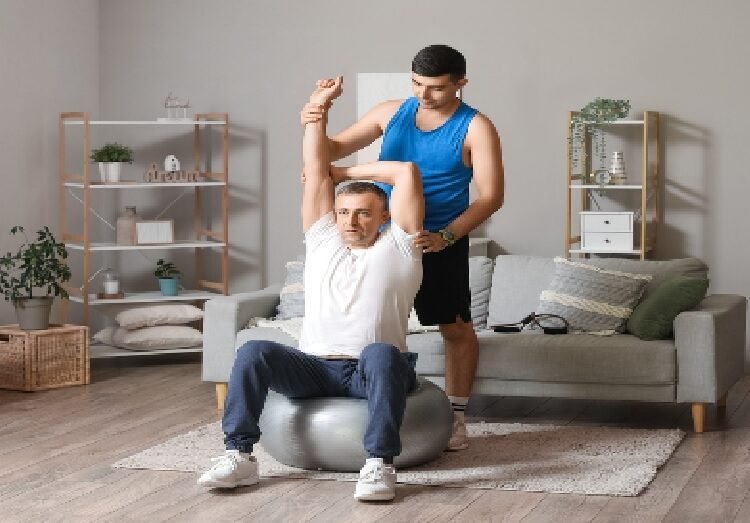Bathrooms have evolved from utilitarian necessities into spaces that reflect personal style and offer tangible benefits, especially when it comes to safety. Increasingly, homeowners and renters alike are investing in bathroom remodelling projects. They’re drawn by growing awareness of health, accessibility, and the importance of aesthetic appeal in everyday environments. This blog explores how bathroom remodeling enhances both safety and style, highlights trending designs, and presents key statistics and benefits to support your decision-making process.
Why Bathroom Remodeling Matters
An outdated bathroom isn’t just a visual nuisance; it often poses unseen risks. Slippery surfaces, poor lighting, and hard-to-clean corners increase the risk of accidents and health concerns. By remodeling, you simultaneously elevate aesthetics and address these pressing safety issues.
According to the National Institute on Aging, 80% of falls in the home occur in the bathroom. The desire for safer living spaces is pushing many to reassess their bathroom design choices. A well-executed remodel not only minimizes hazards but also improves the living experience, property value, and overall happiness.
Trending Bathroom Remodel Features That Improve Safety
Slip-resistant flooring
Falls are a leading cause of injuries in the home, and the bathroom is ground zero for slips. Installing slip-resistant flooring plays a pivotal role in preventing accidents. Modern options are designed to provide optimal grip without compromising on visual appeal. Ceramic tiles, porcelain with textured finishes, and luxury vinyl planks are topping homeowners’ wish lists.
A survey by the National Kitchen & Bath Association found that over 60% of bathroom remodels now include slip-resistant flooring. This is especially significant for households with elderly members or young children.
Walk-in showers and barrier-free designs
Traditional bathtubs can be tricky to enter and exit. Contemporary bathroom remodels favor walk-in showers with low or no thresholds, making them more accessible without sacrificing design. Glass enclosures, curbless entries, and linear drains are not just visually striking; they provide ease of use for people with mobility challenges.
Statistics show a 50% decrease in bathroom injuries for homes that feature barrier-free showers compared to those with traditional bathtubs. Lever-style handles and built-in benches further contribute to safety and comfort.
Improved lighting schemes
Dim lighting in bathrooms is a common safety hazard. Modern remodels incorporate layered lighting solutions, with overhead, task, and accent lights to eliminate shadows and brighten work areas like mirrors and vanities. LED technology has made energy-efficient, smart-controlled lighting systems a go-to choice.
According to the American Lighting Association, homes with updated bathroom lighting report a 30% increase in visibility and a notable reduction in fall-related incidents.
Strategically placed grab bars and handrails
Grab bars are being reimagined in form and function. No longer clinical in appearance, they are available in finishes and shapes that blend seamlessly into the bathroom’s aesthetic. When placed near showers, tubs, and toilets, these supports help prevent falls and offer added confidence for all users.
Retrofitting grab bars has been linked to a 40% reduction in bathroom accidents, making them a must-have feature in safety-conscious remodels.
Anti-scald fixtures and temperature control
Burn injuries from hot water are a significant concern, particularly for young children and seniors. Remodeling with anti-scald valves and well-calibrated temperature controls addresses this risk. Digital thermostatic mixers and pressure-balanced valves are increasingly incorporated into modern bathrooms, allowing for precise temperature management.
Homes with anti-scald features have reported a 60% decrease in scald-related emergencies, according to the Centers for Disease Control and Prevention.
The Style Factor: Making a Statement
Safety does not require sacrificing style. Current trends prove that design-forward choices can harmonize with functionality.
Seamless surfaces and minimalist lines
Clean, uncluttered lines create an open and calming atmosphere. Floating vanities, wall-hung toilets, and frameless glass panels dominate this trend. Not only do they increase usable floor space, but they also make cleaning more straightforward, reducing the risk of mold and bacteria buildup.
A Home Design Trends Survey reported that minimalist bathroom redesigns were favored by 72% of professionals surveyed, insisting that streamlined spaces boost both appeal and hygiene.
Natural materials, bold colors, and statement fixtures
Spa-like atmospheres have taken center stage in recent bathroom renovations. Natural stones, warm woods, and bold accent tiles are being embraced to create spaces that stand out while remaining functional. Brass, matte black, and brushed nickel fixtures are popular choices, offering both durability and contemporary flair.
Homeowners report higher satisfaction and well-being in spaces that reflect personal taste and personality, establishing a strong connection between design and quality of life.
Flexible Storage Solutions
Modern bathrooms are adopting innovative storage to keep counters tidy and accessible. Recessed shelves, floating cabinets, and built-in niches keep clutter out of sight while maintaining sleek lines. Improved storage not only elevates aesthetics but reduces tripping hazards and improves access to essential items.
A Houzz study found that 83% of homeowners attributed their remodeled bathroom’s functionality to upgraded storage solutions.
The Hidden Benefits of Bathroom Remodeling
Increased home value
A well-executed bathroom remodel delivers a return on investment in more ways than one. Besides practical safety and comfort gains, upgraded bathrooms significantly increase home value. According to Remodeling Magazine’s Cost vs. Value Report, homeowners can recoup nearly 70% of their investment from a midrange bathroom renovation.
Enhanced daily living
The average person spends roughly 30 minutes each day in the bathroom, according to the Bureau of Labor Statistics. Multiplied across weeks and years, this adds up to a substantial portion of daily life. An inviting, secure, and beautiful space can set a positive tone for the entire day.
Health and air quality improvements
Allergens, moisture, and poor ventilation can impact respiratory health and overall well-being. Modern remodels prioritize ventilation, natural light, and easy-to-clean materials to promote healthier environments. Households with updated bathrooms consistently report fewer mold-related issues and improved air quality.
Sustainability and water efficiency
Bathroom upgrades often include eco-friendly fixtures and water-saving technologies. Low-flow toilets, smart sensors, and efficient faucets and showers conserve water without sacrificing performance or style. The Environmental Protection Agency has linked water-efficient remodels to an average household saving over 20,000 gallons of water annually.



